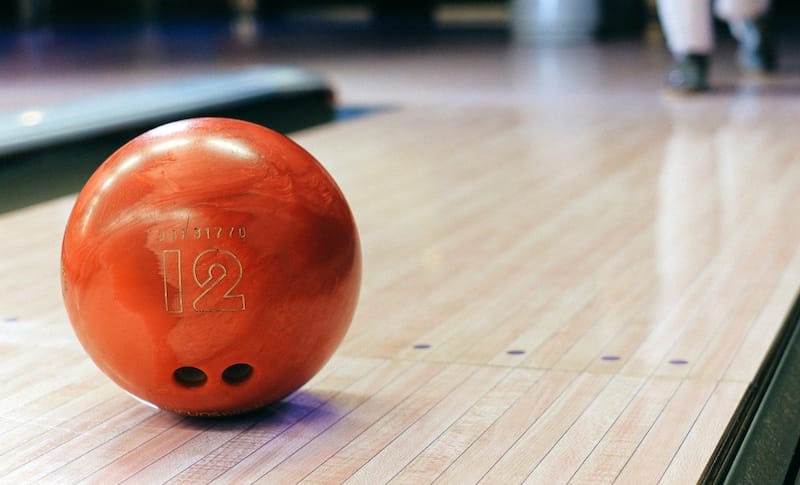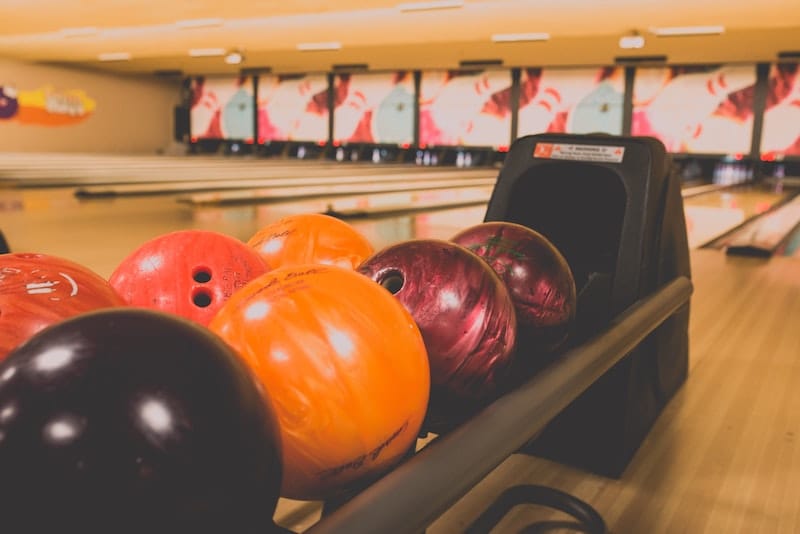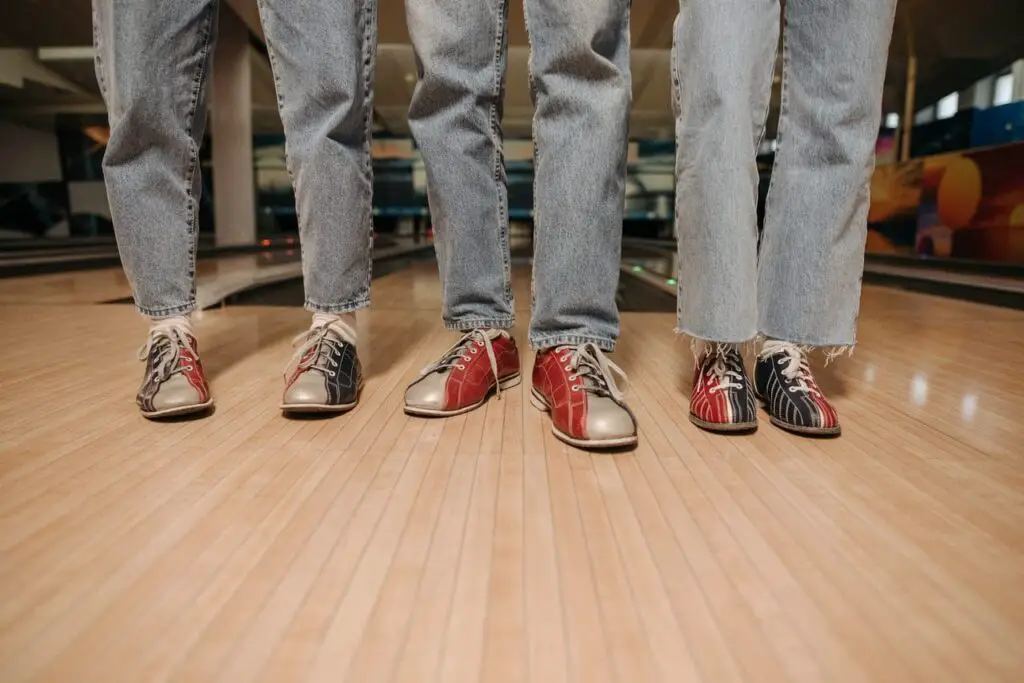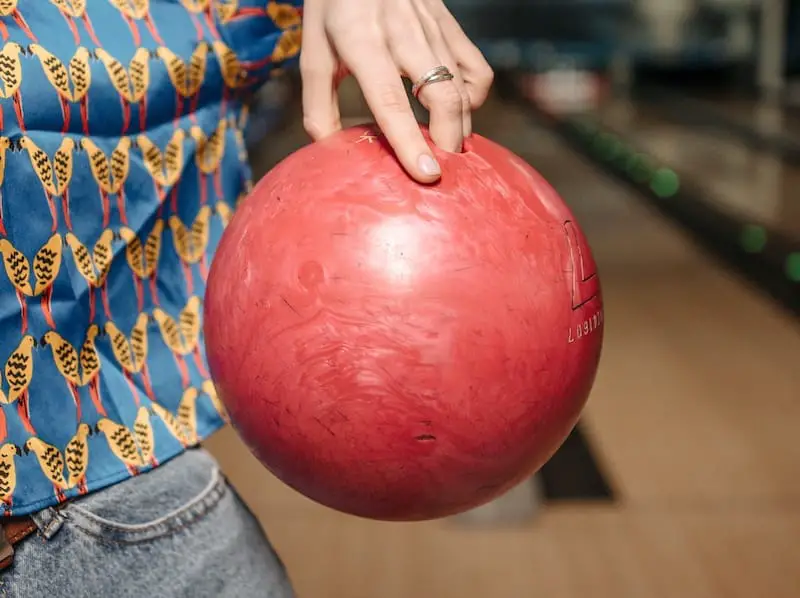There is a common idea out there that bowling balls have liquid centers. Though many do not consider this, there are people out there who remain curious about this strange myth. Are they solid, or are they made out of liquid? Many may not know the answer to this seemingly straightforward question.
Bowling balls don’t have liquid centers, although this detail would certainly make them unique. Instead, a weight block makes up the dense center of the ball to give it the ability to roll and pick up speed down the lane. This interior is critical to the overall construction of a bowling ball.
Read on to learn more about what makes up the center of a bowling ball. With this knowledge, you can better understand how your bowling ball works as you use it to throw a perfect strike down the middle of the lane. Knowing the center of the ball can help you select a bowling option that will give you the best possible game you can access.

What Are Bowling Ball Centers Made Of?
Despite popular belief, the interior of a bowling ball is neither hollow nor made up of liquid. Instead, it is comprised of a combination of materials that form a solid interior that helps the bowling ball move down the lane. The center of a bowling ball is a critical part of the piece as a whole.
Typically, the center of a bowling ball is made out of the following:
- Powdered metal oxides: Typically, the metals put into use are calcium or iron oxide.
- Resin: Resin is mixed with the metal powders placed inside the center of the ball.
- Catalyst: A catalyst permits these materials to combine and harden in the middle.
These materials make up the center of a bowling ball and make the center solid. Which of course then debunks the myth about bowling balls being hollow.
The shape these materials end up forming is a factor in how the bowling ball rolls down the lane. All of them make up a solid interior that many are not familiar with inside a bowling ball. Despite popular belief and a few cartoons, the interior of a bowling ball is not made out of liquid. It’s not hollow, either. It’s as solid as a rock.
What Are the Different Components of a Bowling Ball?
There are several different components of the bowling ball. The center is one of them, acting as a weight in the middle of the piece. This item is just the interior aspect of the bowling ball. There is also an outer core, which protects the inside and helps it to slide.
The outer core is typically made out of the following materials:
- Polyester: Polyester often coats the ball’s surface, providing a thick glossy appearance that can come in many colors.
- Glass beads: Glass beads help distribute the density of the ball all over the surface of the piece.
These two materials help make a solid outer core for a bowling ball, coating the interior with a protective and slippery coating that pushes it forward in a lane.
The outer core and the inner core work together to make a ball that will knock down the most pins. Each assists the other to make the most effective bowling device possible. The inner core needs to be solid to give the outer layer the stability and direction it needs.
How Does the Center of a Bowling Ball Help It Roll?
The mass distribution inside the ball impacts the way it moves down the lane, as mentioned above. The design of the core, or weight block, can determine your ball’s ability to stay in a line as it moves down the lane. It can also assist in determining the possible speed and the way the ball curves out of your hand.
The center of the bowling ball can also impact:
- The overall weight of the ball
- The friction between the ball and the lane
- The roll out the tendency of the ball
These are influenced by the construction of the interior of the bowling ball.
Does the bowling ball weight matter?
The center of the bowling ball may not be visible without breaking into the ball in half, but it plays a critical part in how the piece operates. A bowling ball is nothing without the inside helping it out as it moves. It needs to be solid, or it will not move forward efficiently and effectively.
What size bowling ball should a woman use?
How Does the Center Work with the Other Layers?
The center of the ball and the outer layer work together in many ways to provide the best bowling experience. In the center, mass is distributed to give the bowling ball direction and a skip that will permit it to hit as many pins as possible. The outside allows some traction for the ball and enhances slip to give the ball a smooth motion.
One does not work without the other. A ball that has a liquid center would not work in a way that would permit the outside to work effectively. A bowling ball needs a solid inner core so that the polyester outside of the piece can complement it, making a tool bowlers everywhere will love.
Final Thoughts
A bowling ball is a fun item to play with that can range in weights and how it rolls down the lane. Many do not give a second thought to the interior of a bowling ball, but others believe it is liquid. The center of a bowling ball is not water but a combination of metal and resin that helps determine how the ball rolls down a lane in the way it is formed.
The way a bowling ball is created has a massive impact on the way it moves. The outer and inner shells work together to allow the ball to roll forward at a force that will knock down as many pins as possible. Without a solid core, the ball would not be able to stay on target. A liquid center would do a bowling ball no good. A solid for is necessary for optimal rolling.


